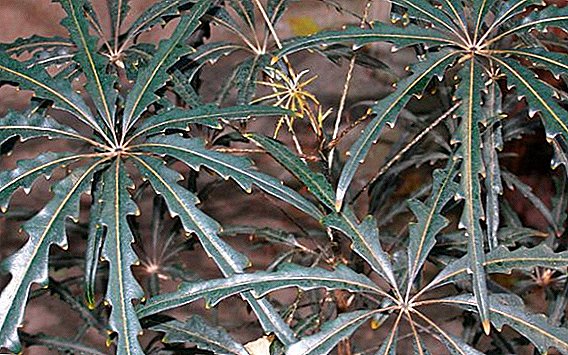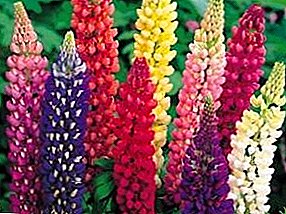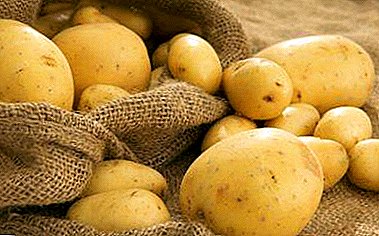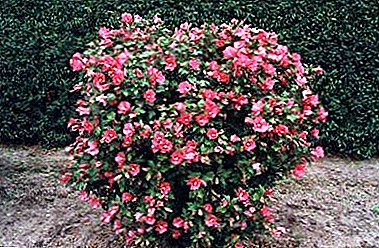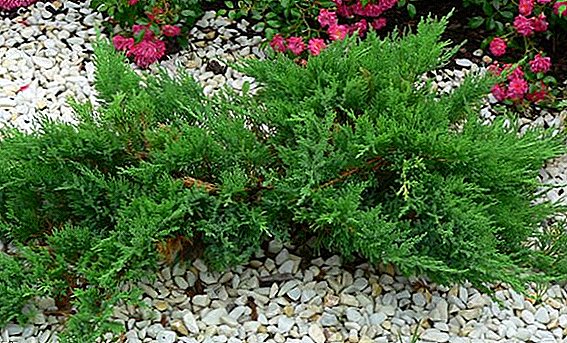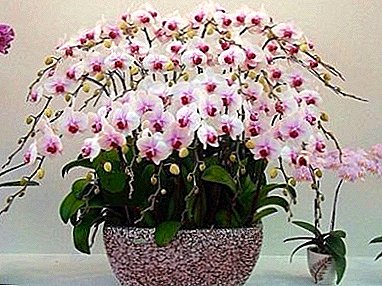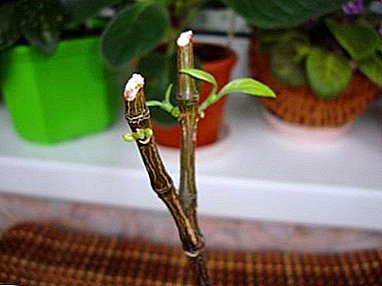
Fuchsia - a beautiful indoor plant with lush flowers. The main difference is bright and unusual flowering. In order to get a lush bloom fuchsia must be properly cut.
This procedure is carried out very carefully, following all the recommendations and rules. Let's talk about all this in detail in our article. You can also watch a useful video on this topic.
How to do pruning?
Season selection
First, it is necessary to decide when it is best to prune the plant. Often it is done in the spring. Pruning is done until new buds appear. If done correctly, the florist will get a beautiful and long bloom.
Is it possible to fall?
Pruning Fuchsia in the autumn is allowed, but it should be done in late October or early November. This option is suitable flower growers who grow a flower as a houseplant. Cut in the fall should be in a sparing mode. On each of the branches are removed parts that were flower stalks. Cut the branches to the first from the top of a pair of leaves with stone buds.
Recommendation. When the fuchsia still continues to bloom in the fall, then it is better not to touch it, but to postpone it until winter.
Is it allowed for the winter?
Winter pruning is done for fuchsias that bloom until late autumn.
Pruning must necessarily be carried out before hibernation (for details on how to properly prepare fuchsia for wintering and keep it in the basement and in the cellar, read here). It should be strong, shoots are only 15 centimeters long. If the crown is already formed, then weak shoots should be cleaned, and then thin out and shorten the remaining branches to one third of their height.
Features of the procedure: instrument, disinfection
 The main tool is a garden knife or scissors. Very necessary, before the procedure sanitized inventory. This will prevent viral diseases that are transmitted with the juice of affected flowers. For disinfection use different formulations containing alcohol.
The main tool is a garden knife or scissors. Very necessary, before the procedure sanitized inventory. This will prevent viral diseases that are transmitted with the juice of affected flowers. For disinfection use different formulations containing alcohol.
You can use medical sprays, alcohol wipes or household products such as chlorine and kerosene.
Well disinfects manganic acid vitriol. Tools are dipped into the solution for a few minutes and then wiped with a clean cloth.
How to achieve lush flowering?
Lush flowering is directly dependent on pruning. The later this is done, the later the plant will bloom. The procedure is carried out 2 times a year. The first time before winter, and the second time in early spring. Crop spring occurs in late February or early March. Its main task is to form a beautiful crown with a lot of young shoots, at the ends of which buds appear.
Features trimming:
- To begin with, all fragile small branches are removed, since they will not bloom or it will be weak.
- Then you can begin to remove dry and very thin branches.
- To prevent excessive density of the bush, you need to cut off the shoots directed to the center.
- During pruning of shoots, it is necessary to consider that the crown must be the correct form. The cut is made at a distance of 1-2 centimeters from the node.
How to care after the flower?
- Lighting. Fuchsia is good at diffuse lighting, so after pruning it must be put on the window sill, whose windows face north or east. With a lack of light, the plant will appear small and rare flowers.
- Watering should be moderate. Care should be taken to ensure that the topsoil does not dry out.Reference. Use only defended soft water. In the spring, carry out watering 1-2 times a week, and in winter, reduce to several times a month.
We covered more about how to care for fuchsia at home and in the garden in this article.
Fertilizers
 The introduction of dressings begins immediately after hibernation and spring pruning. It is necessary to continue feeding until autumn. In special stores you can buy fertilizers that are designed for flowering plants.
The introduction of dressings begins immediately after hibernation and spring pruning. It is necessary to continue feeding until autumn. In special stores you can buy fertilizers that are designed for flowering plants.
If you overfeed fuchsia, it will begin to grow foliage, but the flowering will be scarce. To prevent this from happening, fertilizers are applied only once every couple of weeks. The composition of the drugs should include nitrogen, phosphorus, potassium and magnesium.
There are some rules that must be followed when feeding a flower, after it is pruned:
- Top dressing is done only in wet ground.
- Organic fertilizers need to be diluted with water twice as much as is written in the instructions.
- During the cold weather the flower does not need fertilizing.
Cultivation, reproduction and transplantation
Fuchsia care at home is quite simple. Even a novice gardener will be able to grow this flower. We just need to remember some rules of cultivation:
- Maintain a temperature of about 20 degrees in summer and reduce it to 5 degrees in winter.
- In winter, fuchsia needs more light.
- In the summer, the flower can be taken out into the street, so that it breathes fresh air.
- Keep away from drafts.
- Do moderate watering with soft water.
- Follow recommendations for fertilizing and selection of fertilizers.
- Make timely and correct pruning.
Fuchsia is transplanted every year. This updates the flower and makes room for an overgrown root system. Capacity is selected medium size, made of ceramic and light color. At the bottom of the pot must have a drainage, well suitable clay. To the soil the plant is not very demanding, but it is better to use a soil mixture of peat, sand and hardwood.
Important! To prevent damage to the roots, during transplantation, the flower must be gently rolled over with a clod of earth and sprinkled on the edges. Before transplanting a third of the length of the shoots trimmed.
Reproduction occurs by seed, cuttings and leaf:
 Fuchsia seeds do not often propagateSince it is difficult to get seeds, it will have to artificially pollinate a flower. Also, the seed method does not allow to obtain a plant with accurate varietal characteristics.
Fuchsia seeds do not often propagateSince it is difficult to get seeds, it will have to artificially pollinate a flower. Also, the seed method does not allow to obtain a plant with accurate varietal characteristics.- Most often used cuttings for reproduction. This method is the most simple and popular.
- And the third type of reproduction - leaf. Fast and easy way. It will be necessary to tear off the largest and healthiest sheet, put it in a loose substrate and cover it with a can from above. After the formation of shoots immediately transplanted into the pot.
Details on how to plant fuchsia at home, read here, and from this article you will learn about the features of growing and caring for this beautiful flower in the garden.
Diseases
Fuchsia rarely gets sick, most often this is due to improper care after pruning. The most common ailments are:
- Rust. Brown spots on the inside of the leaf are a clear sign of this disease. It could get on the plant due to poor disinfection of instruments. In order to get rid of the disease, it is urgently necessary to remove the infected leaves and treat them with Bordeaux fluid at an interval of 2-3 days.
- Root rot. Appears as a result of excessive moisture. If dark brown roots were seen during transplantation, this means that the flower struck rot. Such fuchsia can no longer be saved; the only thing that can be done is to cut the cuttings and root them.
- Chlorosis. A flower can get sick with chlorosis if it is poured over with water from a tap. The main feature is yellowed leaves. To return to a healthy look, you need to review the mode of irrigation.
Conclusion
Fuchsia pruning is a necessary agrotechnical technique, without which the plant will not actively and luxuriantly bloom. This process is simple, so that even a novice florist can do it. But if this is not done, the plant will take an ugly shape, the number of buds will decrease, as will their size.


 Fuchsia seeds do not often propagateSince it is difficult to get seeds, it will have to artificially pollinate a flower. Also, the seed method does not allow to obtain a plant with accurate varietal characteristics.
Fuchsia seeds do not often propagateSince it is difficult to get seeds, it will have to artificially pollinate a flower. Also, the seed method does not allow to obtain a plant with accurate varietal characteristics.